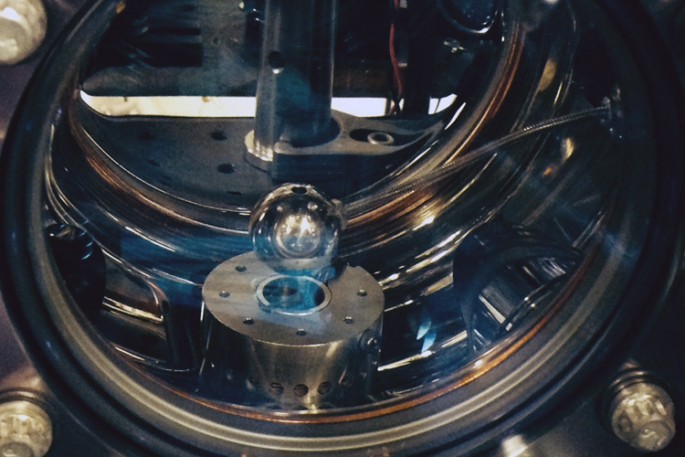Our universe is made up of 70 percent of dark energy that continues to accelerate the expansion of space as it pulls galaxies apart however, scientists are still mystified by its existence that nobody knows what it is made from and theories have been proposed ever since its first detection in 1998.
One theory proposes how dark energy exists through a "chameleon" field where its power is generated depending on the environment that surrounds the dark energy. This theory is first proposed in 2004 by physicist Justin Khoury who is also the co-author of this new study, from the University of Pennsylvania where these chameleon fields change dramatically by shrinking in dense regions in space similar to Earth's atmosphere where it can only be measured in shallow, less dense areas in space.
According to Holger Muller of the Lawrence Berkeley National Laboratory at the University of California in Berkeley, this chameleon field is light in empty, void regions in space however, when an object enters it, the energy becomes so heavy.
However, if scientists detect these chameleon particles, they will now be considered as a "fifth force" that is now beyond stronger and weaker nuclear forces even gravitational and electromagnetic ones in the universe. To date, these fields have yet to be detected under laboratory conditions.
Now, scientists from UC Berkeley led by Muller conducted experiments to build a replication of the vacuum in space with a vacuum chamber the size of a soccer ball where the pressure inside is one trillionth of Earth's atmosphere.
Researchers also placed an aluminum sphere, the size of a marble inside the chamber along with cesium atoms that were inserted inside the artificial space vacuum environment. Muller says that if chameleon particles exist, then the cesium atoms will fall towards to the aluminum sphere with slightly faster acceleration than gravity.
Theory suggests that chameleon fields can cause cesium atoms to react differently with a different acceleration that depends on the distance around the sphere.
The results revealed that there was no chameleon field present after dropping the cesium atoms on the aluminum sphere, as ultra sensitive lasers were used to measure the forces working with the atoms while they were falling at a duration of 10 to 20 milliseconds.
Khoury says that Muller has ruled out that chameleons particles interact with normal matter on a more intense manner compared to gravitational forces where Muller will now conduct more experiments on areas where chameleons are most likely to react with gravity, in which they are more likely to exist.
This new study is published in the journal, Science.





















